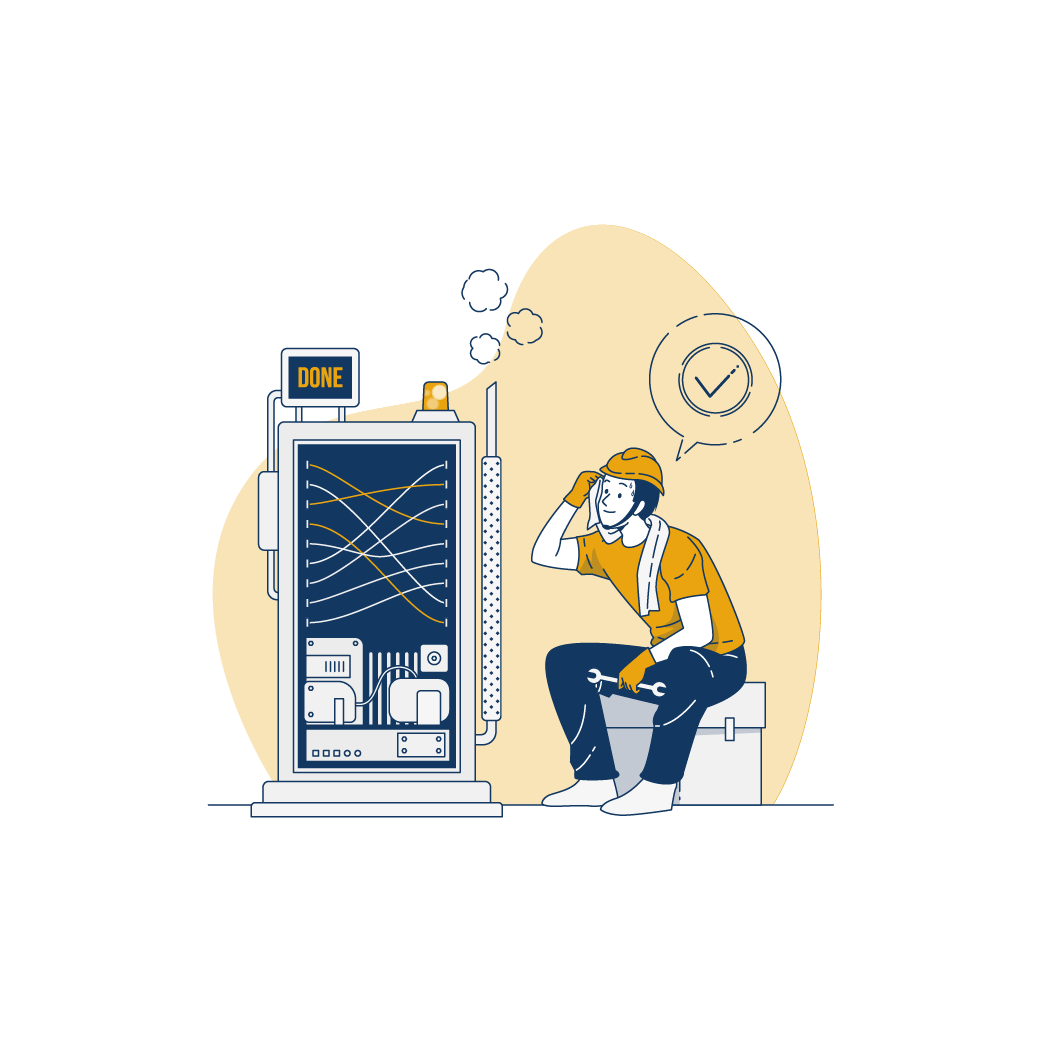LV/MV Switchgear Operation and Maintenance
LV/MV Switchgear Operation and Maintenance
- 2024-03-30
- 8:0
- In person/online
Course description
Switchgear plays an important role in electricity distribution and industrial system. Its performance significantly affects the overall performance of the system. Failure to efficiently disconnect faults elsewhere in the network or failure in switchgear itself is costly, resulting in additional loss of supply, damage to equipment and possibly fatal injury to personnel. It is therefore critically important that switchgear is operated and maintained correctly, within an overall asset management regime that is both economic and effective in securing a high level of system reliability. The emphasis is primarily on oil, air blast, SF6 and vacuum circuit breakers. This training course will discuss the application, installation, maintenance and testing issues relating to low & medium voltage switchgear and circuit breakers.
Target audience
• Managers, engineers and technicians who work with switchgear and circuit breakers and who need to update their skills and knowledge in this critical area of electrical power systems protection. • This course is directed at anyone who would like to expand their knowledge of preventive maintenance of switchgear and protection of electrical networks
Course objectives
At the end of the program, participants will be able to:- At the End of the Course Participants will understand:
- • Selection of appropriate type and rating of circuit breakers and switchgear
- • Fundamentals of operating switchgear
- • Switchgear components (CTs, VTs, relays and cable terminations)
- • Safe operational policies including safety rules and safety documents
- • Safe maintenance policies including safe working in switch rooms, indoor and outdoor substations
- • Fundamentals & performance of MV switchgear.
- • Provide methods and devise solutions for electrical problems encountered during connection and maintenance.
- • The design, functionality and failure modes of switchgear systems.
- • Understanding of electrical safety during maintenance of switchgear systems.
Day 1:
- SWITCHGEAR - ORIGINS AND TYPES
- • Single line diagrams
- • Active and passive network components
- • Circuit breaker utilization
- • Alternative forms of MV switchgear – ring main units and load breaking/fault making switches
- • Fuse switches
- • LV/MV fuses in combination with, and as alternatives to circuit breakers
- • Auto-reclosers and auto-reclose operation
- APPLICATION OF SWITCHGEAR
- • Principles of current interruption
- • Plain break circuit breakers
- • Bulk and small oil volume circuit breakers
- • Operating mechanisms
- • Transfer earth circuit breakers
- • Air break and air blast switchgear
- • SF6 and vacuum
- • Switchgear in association with disconnectors
- • Fixed and withdraw-able designs
- • Switchgear standards
- • Factors affecting switchgear selection
Day 2:
- SPECIFICATION OF SWITCHGEAR
- • Switchgear ratings - highest system and impulse withstand voltages, load and
- • short circuit currents
- • Simple and complex protection systems
- • Switchgear ancillaries, measurement CTs, VTs and relays
- • Cable terminations
- • Indoor and outdoor operation
- • Substation and switch room layouts and design
- DISTRIBUTION SWITCHGEAR
- • Primary substations – name plate data
- • Device function numbers – suffix letters, main devices and auxiliary devices
- • Vacuum Switchgear up to 36kV
- • Description of equipment – front, rear, cable entry and busbars
- • Vacuum principles of interruption
- • Air and SF6 external insulation of busbars and vacuum interrupters
- • Oil breakers
- • Maintenance requirements air, oil, vacuum and SF6
Day 3:
- MV GAS INSULATED SWITCHGEAR AND AUXILIARY PLANT MAINTENANCE
- • 3 phase arrangement SF6 arrangements
- • Arc characteristics closing and opening – short circuit testing
- • Switchgear ancillaries, measurement CTs, VTs, relays
- • Decomposition of arced SF6 Handling contaminated materials – disposal!
- • Equipment required for maintenance – investigating leaks
- • Mechanism testing and auxiliary relay contact circuits – trip coils open/close
- • Contact trip timing tests and record interpretation – contact resistance tests
- • Fault recording and reporting – national data base of faults
- • Maintenance records
- SHORT CIRCUIT TESTING
- • Symmetrical and asymmetrical breaking
- • Make and break operations
- • Understanding test oscillograms
- • Case Study - Specification for a 132 Kv
- • Switchboard
Day 4:
- SAFETY POLICIES
- • General safety precautions and the use of personal protective equipment
- • Principles of safety rules
- • Principles of personnel authorisation
- • Operative training for safe operation of switchgear
- • Isolation in a circuit breaker context
- • Safety documentation
- • Operational and safety locking, caution and danger notices
- • Work safety in a substation environment
- • Safety interlocks
- • Substation alarms
- • Individual study task and presentation -safety policies in my company and how they might be improved
- DIAGNOSTICS, TESTING AND MAINTENANCE
- • Switchgear inspection methodologies
- • Partial discharge measurement and survey
- • Timing tests
- • Thermovision
- • Mechanisms of deterioration
- • Principles of circuit breaker maintenance
- • Maintaining oil circuit breakers
- • Contact maintenance and contact wipe
- • Oil testing
- • Maintaining vacuum circuit breakers
- • Maintaining SF6 circuit breakers
- • Switchgear defects and defect control systems
Day 5:
- • Hand- on for LV MCB Circuit Breaker
- • Hand- on for LV MCCB Circuit Breaker
- • Hand- on for LV ACB Circuit Breaker
- • Hand- on for MV Circuit Breaker and Switchgear
- • Hand- on for MV Vacuum Circuit Breaker
- • Hand- on for MV SF6 Circuit Breaker and Switchgear



